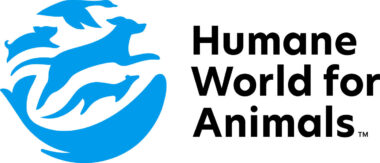Australia is home to some of the last significant populations of sawfish on the planet. We need your help to find out how many are left.
Sign-up to a citizen science search before midnight Friday 25 October
- In December 2023, the world’s five sawfish species were reassessed as ‘critically endangered’ on the IUCN Red List.
- Four of the five species – Freshwater sawfish, Narrow sawfish, Dwarf sawfish and Green sawfish – are found in north Australian waters, but ‘proof of life’ is limited to isolated pockets in Queensland, Western Australia and the Northern Territory.
- During National Sawfish Sighting Week 2024 (26 October – 2 November), citizen scientists are needed to help spot these rare and endangered creatures or, just as importantly, report back if they are nowhere to be seen. Registration open until Friday 25 October: https://www.sharksandraysaustralia.com/sawfish-week-registration/
Forty years ago, sawfish were regularly spotted in Australia’s tropical and subtropical waters, as far south as Sydney Harbour. Today, the shark-like rays, easily distinguished by their saw-like snouts which can extend up to two metres (about the length of a Queen-size bed), are rarely seen outside the Gulf of Carpentaria, Northern Territory and the Kimberley.
“With sawfish habitats disappearing globally, we’re in a race against time to find out where these magnificent creatures still exist, and in what numbers,” says zoologist and sawfish expert Dr Barbara Wueringer.
The founder and principal scientist of Sharks And Rays Australia (SARA), a nonprofit research organisation headquartered in Cairns, is calling for citizen scientists across Australia’s north to step during National Sawfish Sighting Week (26 October – 2 November). Register here.
The event is open to participants in Western Australia (from Perth, up the west coast), Northern Territory and Queensland (as far south as Brisbane). Public sightings can also be submitted throughout the year via SARA’s website.
“For four out of five sawfish species, north Australian waters may contain their last populations, and we can’t let them quietly disappear,” Dr Wueringer says. “This is why we want as many people as possible to register and join the search party during National Sawfish Sighting Week.”
Participants who register by Friday 25 October will go in a draw to win “a trip of a lifetime”, joining SARA scientists on a 2025 expedition through Queensland’s wild north, up to Cape York Peninsula.
Dr Barbara Wueringer is available for interview.
Great photos and video available. Credit Sharks And Rays Australia (SARA) and respective photographer of videographer.
_______________________________________________________________________________________
Dr Wueringer launched National Sawfish Sighting Week, last year, in a bid to supersize public sighting data submitted to SARA since 2017 – to date, totalling 1,500 reports from Queensland, Western Australia and the Northern Territory. This data helps guide SARA’s research in partnership with First Nations land and sea rangers and scientists from around the world.
“What’s really encouraging is we’ve received recent sighting submissions from areas on Queensland’s east coast where we previously thought sawfish populations had completely disappeared,” she says, citing reports from Mackay and Moreton Bay.
“There’s no question community involvement is taking sawfish conservation to the next level.”
“If people are not sure what they’re looking at, they should still take a photo or video as we can quickly identify sawfish from other sharks and rays by their fins,” she says, adding ‘non-sightings’ are equally important to report.
“When citizen scientists go out and try to spot sawfish, and report sightings and non-sightings back, we can use the ratio to estimate actual population numbers in different locations.
“Our sighting campaign has shown that people can see sawfish without targeting them, like when they walk their dogs along a beach, fly their drones, or during boating near mangroves, and this is the information we are interested in.”
Sawfish are protected in Australian waters under Commonwealth legislation (Environment Protection and Biodiversity Conservation Act) and various state legislation.
Dr Wueringer says sawfish are most active early morning and late afternoon. They live in shallow, coastal waters, estuaries, rivers and creeks, in tropical and subtropical regions, mainly using mudflats and mangroves as their habitats.
“But some species have been spotted by people walking close to the shoreline on long, sandy beaches,” she says.
“One lucky person submitted a video diving with a sawfish off Exmouth in Western Australia and someone else sent in a photo of a sawfish pup spotted in Albatross Bay, Weipa [Far North Queensland]. It would have been less than three weeks old, based on its size – measuring under 60cm – and the fact its teeth hadn’t yet poked out from its saw-like snout.”
The winner of the National Sawfish Sighting Week prize draw, who will join a 2025 SARA expedition – spending about two weeks in Queensland’s Far North, up to Cape York Peninsula – is also in for a “once-in-a-lifetime experience”.
“The Cape is one of the wildest and most remote areas on the planet, and every trip is different,” Dr Wueringer says, of the region most likely to still hold highest densities of sawfish.
She stresses that the prize is transferrable, with SARA expeditions requiring physical fitness and, ideally, camping and boating experience. All other skills are taught on expeditions, including the opportunity to learn from First Nations rangers and Traditional Owners.
“People often ask me if I only want PhD students to join field expeditions. What I really want are ‘MacGyvers’ – people who can troubleshoot with whatever is available. I’m a scientist, but I’ve become very good at changing a trailer wheel bearing on the side of a road.
“Expeditions are a lot of fun, but you never know what’s going to happen. We’ve experienced everything from being caught in a sandstorm to driving through a 20km-long locust swarm… we wanted to take photos, but didn’t want to open doors or windows.
“There’s also so much beauty, like witnessing incredible sunsets and sunrises, which we see from the boat because a lot of our work happens early morning and late afternoon, or observing sea eagles cruise above us, and hearing stories from Traditional Owners about how every living thing is connected and needs to be protected.”
Join National Sawfish Sighting Week (26 October – 2 November) to help protect sawfish from extinction. Register here before midnight, Friday 25 October.
Visit https://www.sharksandraysaustralia.com/sawfish-week/ for full details, including terms and conditions, and how to report sightings and non-sightings back to SARA.
Background information
Sawfish are the most endangered rays on the planet. In December 2023, the IUCN reassessed all sawfish species as ‘critically endangered’.
Four of the world’s five species of sawfish are found in Australian waters. They can grow to total lengths between three and seven metres. Their long, tooth-lined snouts (called rostrum), are full of pores that are sensitive to movement and changes in electric field, giving them a sixth sense for catching prey.
Sawfish are stealth predators and use their saw-like snout to detect and kill prey, delivering fast swipes that can split a fish in half. A collaborative study between SARA and scientists from Murdoch University and Newcastle University found that the shape of the saw is so streamlined that prey may not even detect when a sawfish swipes at them.
Sawfish species:
- Freshwater sawfish (Pristis pristis) grow to a length of about six metres, and can be found in northern Australia, from the Kimberley to Cape York Peninsula. They are counted among the 100 most threatened species in the world.
- Dwarf sawfish (Pristis clavata) reach about three metres in length and are found within sand and mud flats near mangroves in the shallow coastal and estuarine waters of Northern Territory, Queensland and Western Australia.
- Green sawfish (Pristis zijsron) can grow to seven metres in length, possibly the largest species of sawfish. They used to be found as far south as Sydney.
- Narrow sawfish (Anoxypristis cuspidata) are the species of sawfish most likely to be found offshore, in clearer waters. Narrow sawfish are the fastest reproducing species of sawfish, and consequently are the most common species of sawfish in Australia. They are sighted on coastlines of Queensland, Northern Territory, the Gulf of Carpentaria and Western Australia.
Contact details:
Shelley Thomas, 0416-377-444 or [email protected]
For interview: Dr Barbara Wueringer, 0431-519-524 or [email protected]
Download Photos here / Video here.
Please credit Sharks And Rays Australia (SARA) and respective photographer or videographer.
*Note: media have permission to edit and use video, but credit must be included to SARA/Johnny Gaskell.
Social media: @SharksAndRaysAU on Twitter, Facebook and Instagram.




